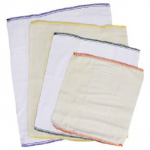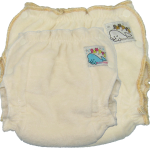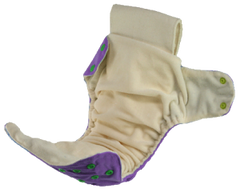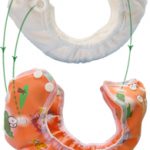Mother-ease Cloth Diapers
Search
Close search


Welcome back to the Cloth Diapering Expert Series! You know how a cloth diaper works, and you're ready to start considering which system is best for you and your baby. Lucky for you, I have spent more than twenty-five years getting to know all of the cloth diapering options and learning which systems work and which don't.
Before we go over the different styles of cloth diapers we'll quickly review one-step vs. two-step diapering. A one-step diaper offers the most convenience as it quickly fastens onto your baby in one step just like a disposable. A two-step diapering system requires two separate steps, first fastening the absorbent diaper around your baby and secondly fastening the waterproof cover over top.
 Flat & Prefolded Diapers
Flat & Prefolded DiapersFlat and prefolded diapers are square or rectangular pieces of absorbent fabric that are folded to suit the size of your baby. They are fastened with pins, a Snappi diaper fastener or simply laid into a waterproof cover which is then fastened around your baby. This system is a two-step diapering system because the absorbent Flat or Prefolded diaper and waterproof cover go on your baby in two separate steps.
 Fitted Diapers
Fitted DiapersFitted diapers are shaped to fit your baby with elastic in the waist and legs for superb mess containment. There is no folding required and they close with plastic snaps or Velcro. They are available in a number of sizes for a perfect fit or one size to grow with your baby.
Fitted diapers are a very popular choice because they are much more convenient than prefolded diapers and are generally more economical than the next two categories. Like flat and prefolded diapers, fitted cloth diapers are a two-step diapering system that requires a separate waterproof cover to be added over top.
 Pocket Diapers
Pocket DiapersThe pocket diaper is relatively new on the cloth diaper scene, but don't be deceived by its popularity as this system is not without flaws.
Pocket diapers consist of a waterproof diaper cover sewn to an inner layer. An opening or "pocket" is left to accommodate the addition and removal of an absorbent insert. Once the absorbent insert has been stuffed in the pocket, the diaper is ready to be fastened around your baby, in one step, making it a one-step diapering system.
Pocket diapers always have elastic at the waist and legs and fasten with either snaps or Velcro.
 All-in-One Diapers
All-in-One DiapersAll-in-One diapers have the absorbent diaper and waterproof cover sewn together to create a diaper that goes on your baby in one simple step. No absorbent liners are needed and these diapers are the easiest to use.
All-in-One diapers always have elastic in the waist and legs and fasten with either snaps or Velcro.
 All-in-Two Diapers
All-in-Two DiapersAll-in-Two cloth diapers are the newest addition to the cloth diapering family. It is similar to the All-in-One diaper except that the absorbent inner is not sewn to the waterproof cover but instead attached with plastic snaps.
Once snapped together, this diaper becomes as easy to use as an All-in-One and goes on your baby in one simple step. When it becomes wet or soiled, simply unsnap the inner absorbent diaper and snap in a clean one to reuse the cover. Fewer covers are required because the soiled diaper inserts are replaced making it a very economical and convenient diaper system.
We caution against diapers that fit too slim. Some diapers, particularly All-in-Ones and Pocket Diapers, have such a slim fit that it doesn't leave room for the addition of absorbent liners or boosters for night or nap time use.
A properly designed diaper provides room for the addition of absorbent liners without compromising the design of the diaper. There should also be enough room inside the diaper to hold a good poop. The diaper should have a cupped shape around the baby's bum. This allows pee to have a moment to soak in and room for a good poop that would squish out if the diaper is too slim.
Obviously, this is a very brief overview of the styles of cloth diapers available, but don't worry, I am not leaving you hanging! This is such a broad and in-depth topic that we took the time to create a full e-book with the pros and cons of each style of diaper, and what Mother-ease does differently. Click here to read the Mother-ease Guide to Cloth Diapering and decide which style is best for you!
Stay tuned for the next issue of the Mother-ease Expert Series, where I help you find the right fit for your baby, or click here to subscribe to our blog notifications and have it notify you in your inbox!
Next Issue: Finding the Right Fit.